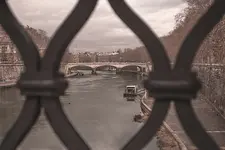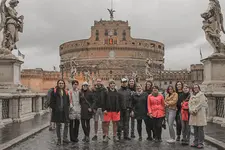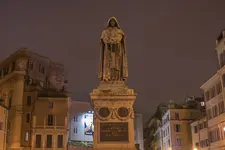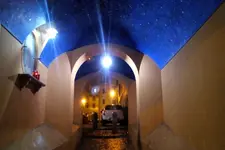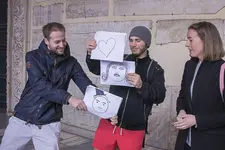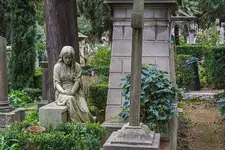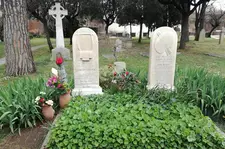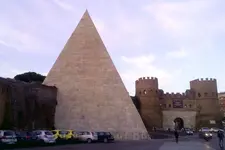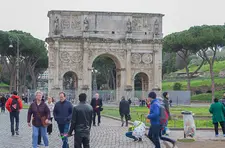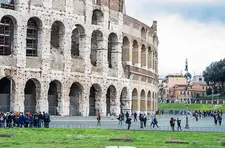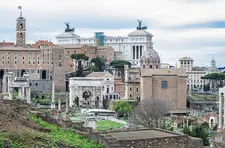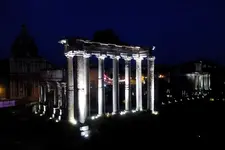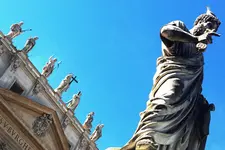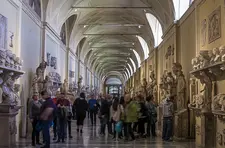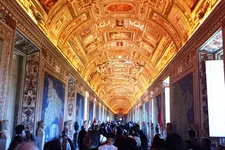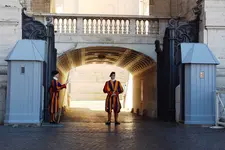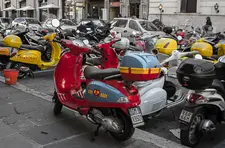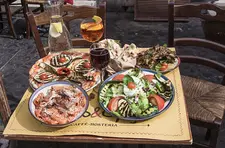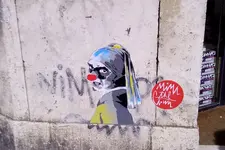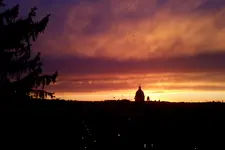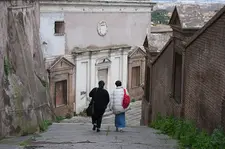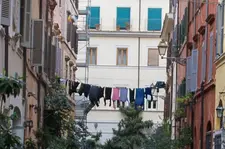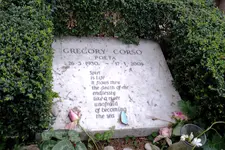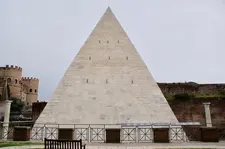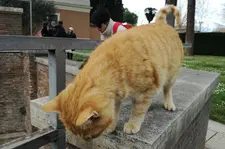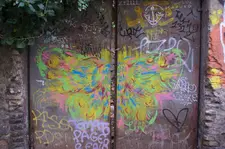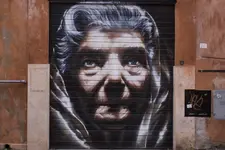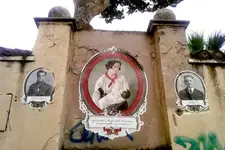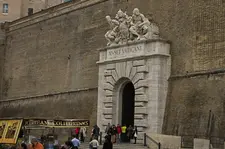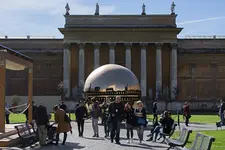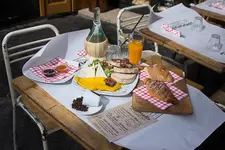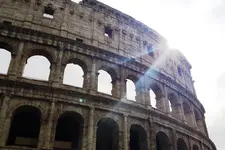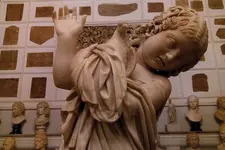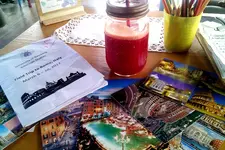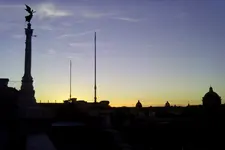Five Days in Rome: Tracing American Life in the Eternal City
By Johanna Preisendörfer (Bamberg University)
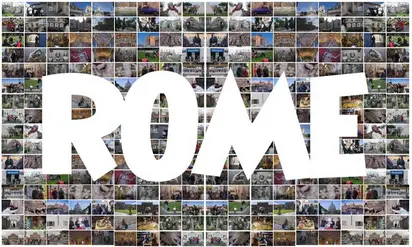
From March 6–10, 2017, participants of Dr. Nicole K. Konopka's seminar Golden Door: Italian Perspectives on the USA and Vice Versa went on an field trip to Rome to explore the manifold historical and modern traces of American life in Italy's capital.
Pictures by Gloriana Cocozza Garro, Johanna Preisendörfer, Christine Gerhardt (CG), Nicole K. Konopka (NKK), Judith Rauscher (JR), Mareike Spychala (MS)
A remarkable number of classic American authors—from Margaret Fuller, Nathaniel Hawthorne, and Harriet Beecher Stowe to Henry James—as well as contemporary writers and filmmakers have made Rome a key reference point for their explorations of American cultural identities and changing American-European relationships. Even more importantly, many of these authors have stressed the significance of experiencing Rome's material culture first hand, in Rome itself. Therefore, our seminar went to Italy to discover how the various, often contradictory myths of the Eternal City can be liked to American literary and cultural studies, thus verifying the saying that "all roads lead to Rome."
"Only in Rome is it possible to understand Rome." (Johann Wolfgang von Goethe, Italian Journey)
We arrived in Rome in early May with the goal to investigate in situ the traces of more than two centuries of Anglo-American-Italian intercultural exchange. Our study trip began with an encounter with the less conventional side of Rome, during a night tour that offered a unique perspective on the city: our American guide, a graduate student working on a Ph.D. in theater studies, not only told us about but also performed some of the legends and dark secrets of Roman history, including stories of burning heretics, corrupted chemists, fallen popes, and powerful mistresses.
"[H]ere was history in the stones of the street and the atoms of the sunshine." (Henry James, The Portrait of a Lady)
On the next day we had an appointment at the prestigious American Academy, located on one of Rome's seven hills. Since its founding by a group of American artists and architects in the late 19th century, the Academy has been an intellectual hub for a dynamic community of American and international artists and researchers by granting scholarships and lodging for independent research and unlimited artistic freedom within its vast halls. Rome, with its streets and buildings filled to the brim with the works of such geniuses as Michelangelo and Leonardo da Vinci, proved to be the perfect place for the Academy's American founding fathers and mothers and their ambitious goals of bridging the gap between science and the humanities, and fostering the ongoing dialog between artists and writers from the US and Europe.
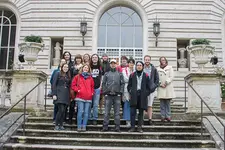
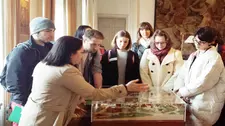
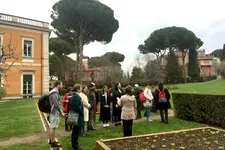
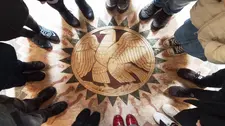
From this magnificent artistic retreat we went on through the picturesque Trastevere quarter to a less lively, but by no means less impressive sanctuary of artists and writers from the past: the Cimitero Acattolico. This non-Catholic cemetery served as a final resting place for many influential writers and artists, and while strolling in the shadow of the grand Cestius Pyramid, we stopped by the graves of the Romantic poets John Keats and Percy Bysshe Shelley to pay our homage.
"Rome. By all means, Rome!" (Audrey Hepburn as Princess Anne, Roman Holiday)
We then followed the footsteps of Henry James' fictional heroine Daisy Miller to the awe-inspiring Colosseum. After a student presentation on Daisy Miller's experiences, and a discussion on discourses of illness, death, and decay in American literature about Rome, as well as another student presentation about the American cinematic obsession with Roman history and the Colosseum, we explored this monument of imperial grandeur and ferocious violence, followed by a walk through the ruins of the Roman Forum, which make the links between grandeur and infamy of ancient Rome still tangible today.
The next day we had an official invitation to the German Embassy in Rome. After a warm welcome, Dr. Grienberger, the head of the Capo Ufficio Politico, spoke to us about the many aspects of ambassadorial duty at the intersection between politics and cultural understanding. She answered numerous questions about the prerequisites for a career in the foreign office, and helped the seminar participants understand how embassies serve as places of vivid cultural and social exchange and international cooperation.
Afterwards we headed to the Villa Borghese—a recurrent reference point in American novels, short stories, and essays about Rome, including a Dispatch by Margaret Fuller from 1847. In the famous gallery, some of us came face to face with brilliant Bernini sculptures and Caravaggio paintings, while others explored the extensive surrounding park or encountered the world-famous crypts of the nearby Capuchin Monastery.
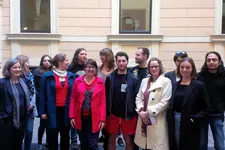
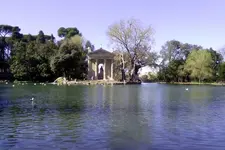
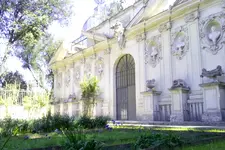
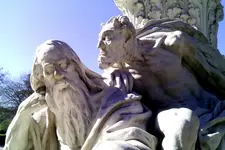
We then had the pleasure of being guests of La Sapienzia, the University of Rome. The head of the American Studies department, Prof. Ugo Rubeo, introduced us to his faculty's international and cultural programs and, especially, to his own research (Mal d'America – An American Illness), which focuses on Italian-American history, relations, and literary and cultural influences—allowing us to compare notes on the influence of Rome on American literature and culture.
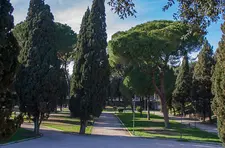
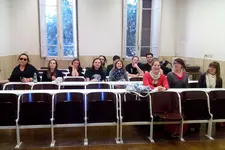
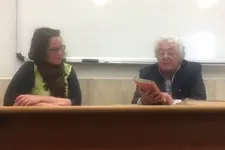
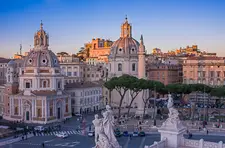
The next day was for many of us the climax of the journey: a visit to the Vatican Museums and St. Peter's Basilica. After a student presentation on "American Artists in Nineteenth-Century Rome", its countless artworks, glorious architecture, and the almost intimidating scale of grandeur made it easy to understand why both places have attracted painters, sculptors, and architects from all over the world for centuries. The sculptural collection of the museums was, after all, the place of study for such notable American artists as Harriet Hosmer and Vinnie Ream, who were part of the American Corinnes, a group of forefront American female artists in the mid-1800s and fictionalized by Nathaniel Hawthorne in his novel The Marble Faun.
The rest of the day some of us spent following the footsteps of Audrey Hepburn and Gregory Peck by dropping a penny in the Trevi Fountain or eating an ice cream while sitting on the Spanish Steps, while others explored the more modern side of Rome, a city that not only brings together people of many nationalities, but also seamlessly and uniquely branches the ancient with the modern.
"[O]ur heart‐strings have mysteriously attached themselves to the Eternal City, and are drawing us thitherward again, as if it were more familiar, more intimately our home, than even the spot where we were born." (Nathanial Hawthorne, The Marble Faun)
After a week of studying the traces of American life in Rome, as well as expanding our understanding of the Roman influence on generations of American writers and artists, our own Roman "Holiday" came to an end. This eye-opening excursion helped us understand why so many Americans continue to feel inspired by Rome, and going back to Bamberg, the "Franconian Rome," for most of us did not mean a final, but only a temporary farewell. All roads lead to Rome, after all.
